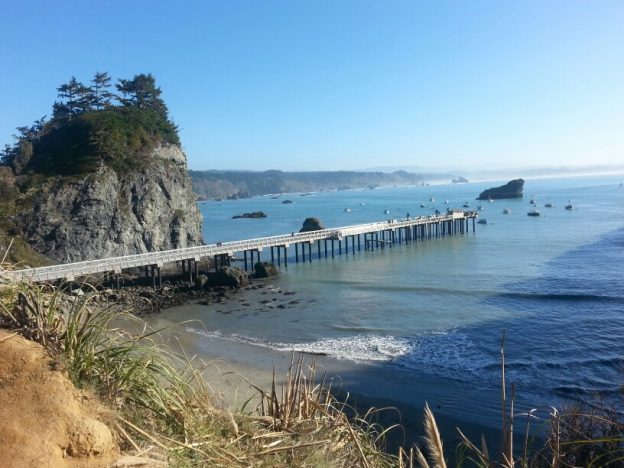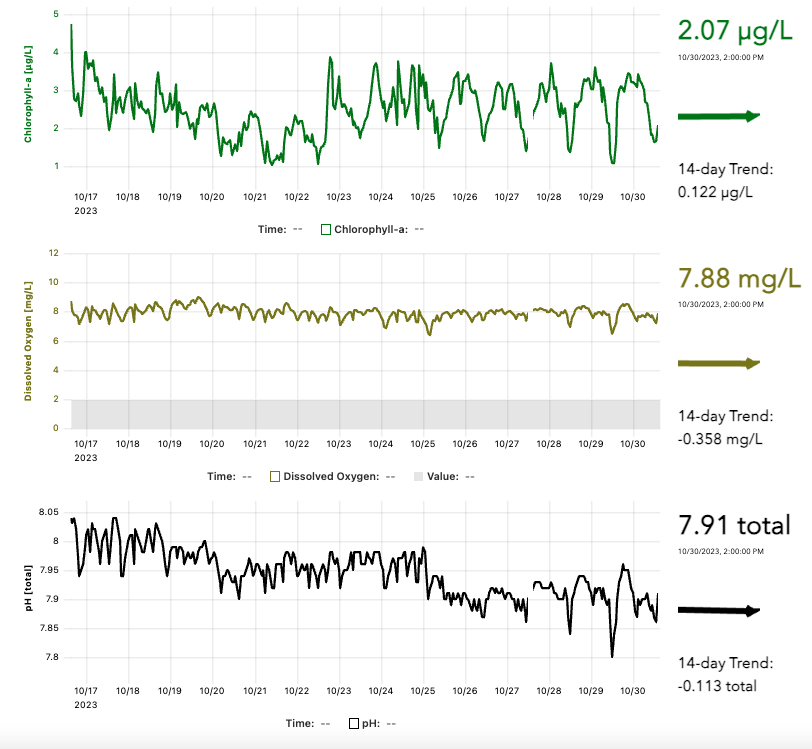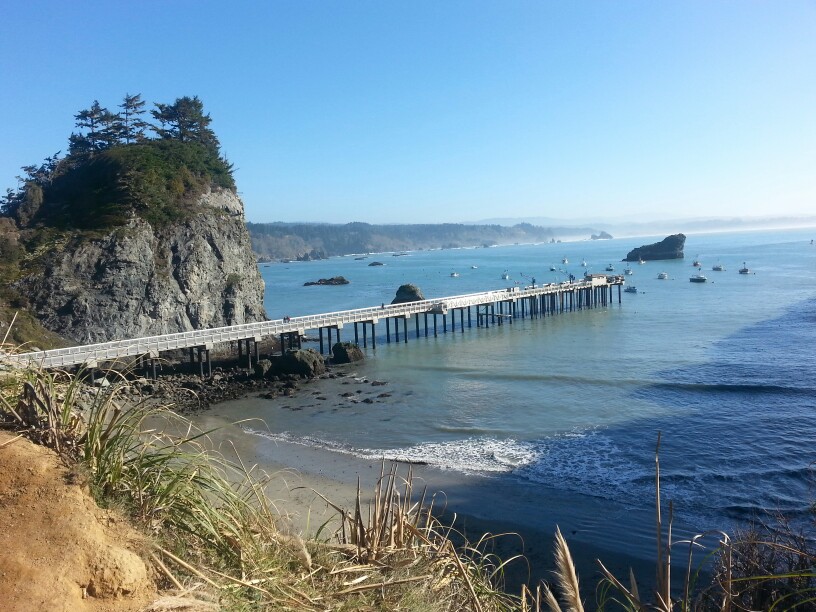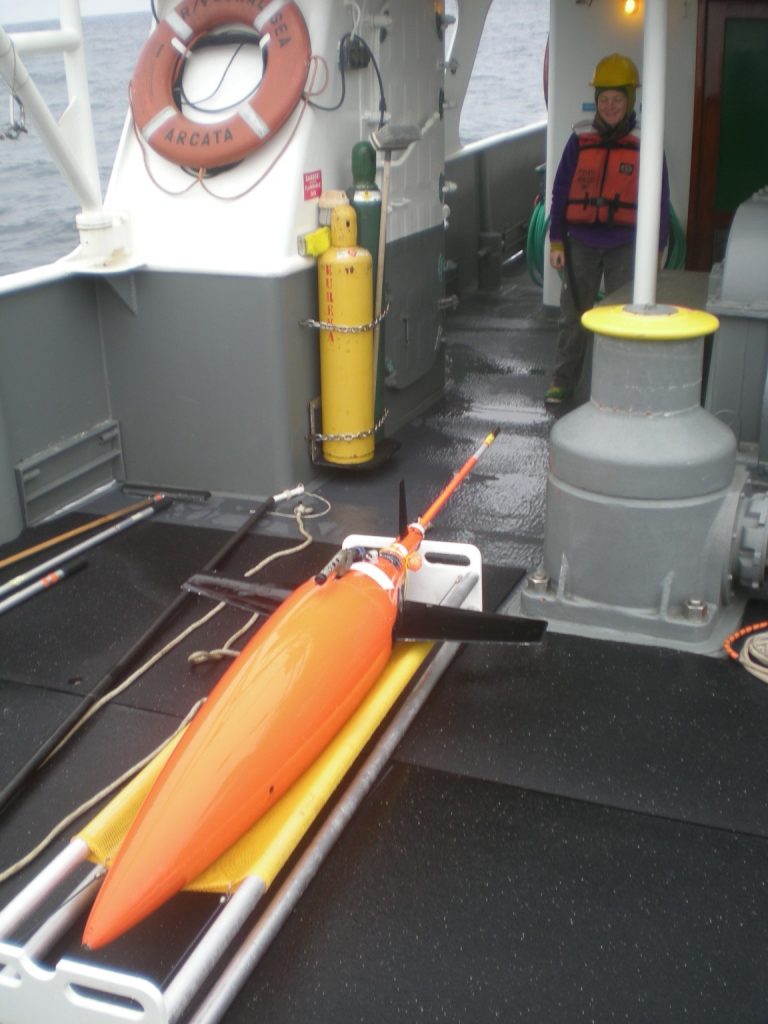Humboldt Bay’s clean yet productive waters are one of the main reasons it is home to both extensive eelgrass beds and an expanding shellfish aquaculture industry that generates more than $10 million in sales per year. Humboldt Bay is one of the few places that can export seed and larvae of oysters and clams anywhere on the West Coast thanks to monitoring that ensures bivalves grown there are free of damaging parasites and diseases.
Humboldt Bay Shore Stations
CeNCOOS partners with CalPoly Humboldt and the Wiyot Tribe measures hydrographic parameters at Trinidad Pier and several locations within Humboldt Bay and serves these data through the CeNCOOS Data Portal. These efforts have been motivated largely by the needs of the large and growing mariculture industry operating in Humboldt Bay, which has been actively involved in requesting and refining marine water quality information for supporting business decisions. Mariculture is an important component of the local economy, producing just over half the oysters (including 70% of the popular Kumamoto oysters) cultured in California over the past 8 years, and producing several hundred million Pacific oyster seed and manila clam seed sold to farms all along the west coasts of the United States, Canada and Mexico.
Trinidad Head Line
Since 2006, CalPoly Humboldt and NOAA’s Southwest Fisheries Science Center (SWFSC) have collaborated to conduct monthly hydrographic and biological surveys along the Trinidad Head Line (THL; 41.06° N; Fig.2). These surveys provide the only year-round, high-frequency ship-based ocean observations in the highly dynamic, strongly forced transitional zone between Cape Blanco and Cape Mendocino. As part of an OPC-funded collaborative study of ocean acidification, CalPoly Humboldt (Abell) conducted additional sampling to quantify carbonate chemical parameters and oxygen concentrations along the THL, successfully documenting seasonal and interannual variability in pH, DO, and other carbonate-system parameters along the THL.





